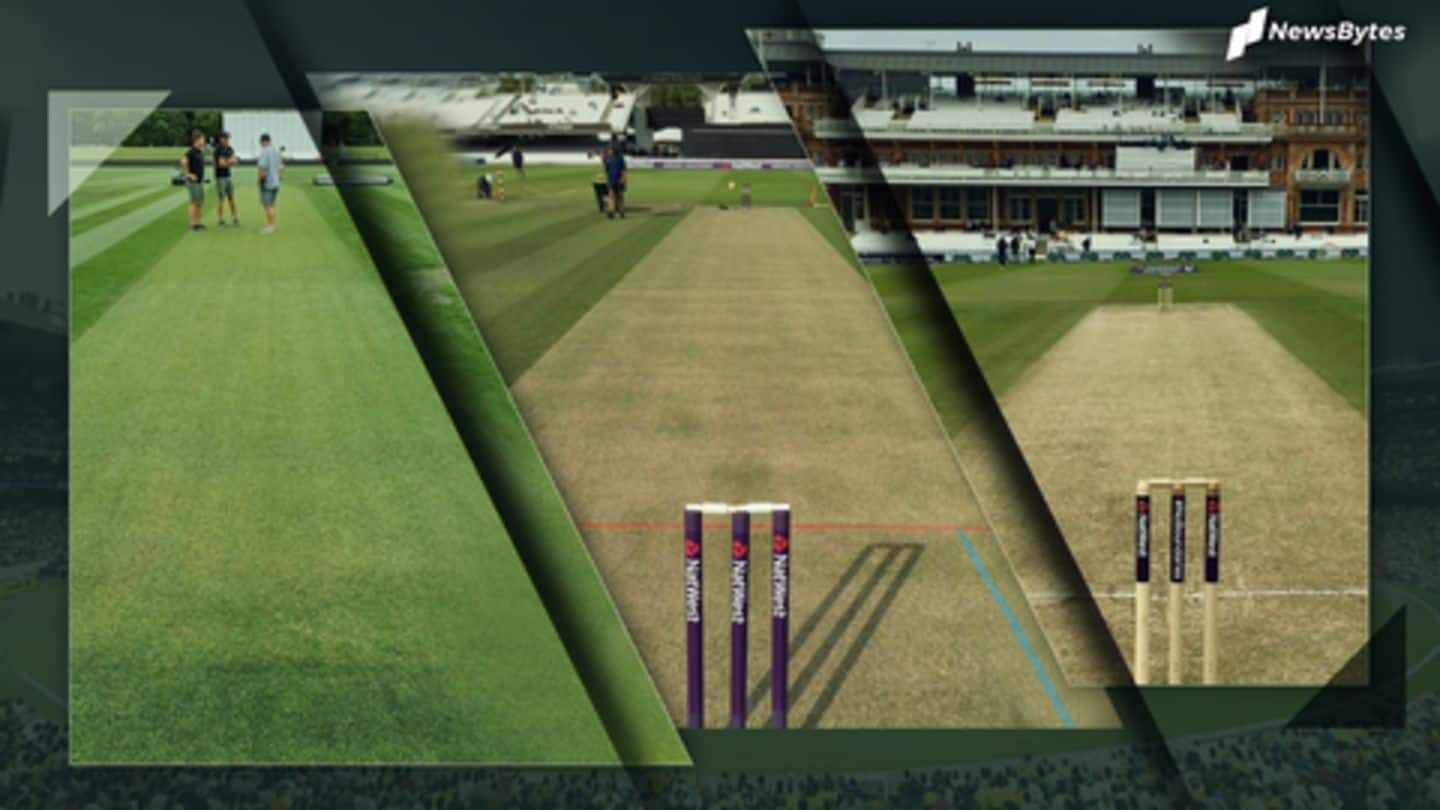
#NewsBytesExplainer: Decoding the impact of different cricket pitches
What's the story
Over the past few days, the debate centering the Motera wicket has been doing rounds.
Several cricket experts have taken a dig at the surface following the completion of the Day/Night Test, which India won in two days.
This isn't the first time when a cricket pitch has become a bone of contention.
Considering the same, let us decode the impact of different pitches.
Flat/Dry
There is little help for bowlers on flat pitches
A flat wicket is often termed as a bowler's graveyard.
Due to the dryness, the batsmen are able to play on the up here.
There is little help for the bowlers whatsoever as the surface is devoid of grass cover and moisture.
However, spinners may make a difference here by inviting big shots.
Also, the ball remains low, more often than not.
Analysis
Was the wicket in D/N Test flat? Yes!
The wicket used in the India-England D/N Test was a dry surface.
Although the wicket has been deemed "unfit" by the cricket pundits, the dynamics present a different picture.
It was the lacquer and hard seam of pink ball that made life difficult for batsmen, not the surface.
Interestingly, nearly 21 of the 30 wickets fell to straighter deliveries by the spinners.
Hard
Hard tracks produce an even contest
The actual hard or "uneven" tracks are completely different from the one used in the third Test.
Hard tracks are lively for both batsmen and bowlers.
The seamers extract steep bounce, while batsmen also claim the merit.
On a hard surface, the cracks proliferate due to less moisture, which brings deviation in play.
As the match progresses, the spinners also play a pivotal role.
Information
The WACA, SuperSport Park are known for their hard surfaces
The WACA (old Perth ground) was famous for its hard surface, and hence remained the fastest track for a long period in international cricket. Meanwhile, the SuperSport Park in Centurion maintains the same legacy even now.
Dusty
The typical rank-turners!
The dust bowls or dusty tracks are the ones with absolutely no grass cover.
Such pitches constitute sand due to less rolling.
The soft and unrolled surface brings spin into play here, turning them into rank-turners.
Fast bowlers garner less benefit as compared to spinners as seam movement is less on offer.
Notably, the wicket used in the India-England Chennai Tests had similar dynamics.
Green-top
A paradise for fast bowlers
A green-top wicket is a paradise for fast bowlers.
The extra cover of grass on the pitch gives the pacers an edge as they extract more movement and bounce.
This also induces swing and seam movement, which makes the ball skid off the surface.
The batsmen should know the art of playing late on such tracks in order to tackle swing.
Information
Green-tops are usually found in England and New Zealand
The green-tops are majorly found in nations like England and New Zealand. The Lord's Cricket Ground and Eden Park are some of the classic examples. The wickets here are well suited for swing bowling also because of the atmospheric pressure.
Damp
The ball travels slower after pitching
A damp wicket contains more moisture content than the other decks.
As a result, the ball slows down after pitching and also keeps low.
Hence, the batsmen have to adjust according to the pace of the ball.
Extra moisture slightly above the surface also fetches swing to seamers, however, reverse swing gets negated.
Meanwhile, the spinners duly make use of low bounce as well.